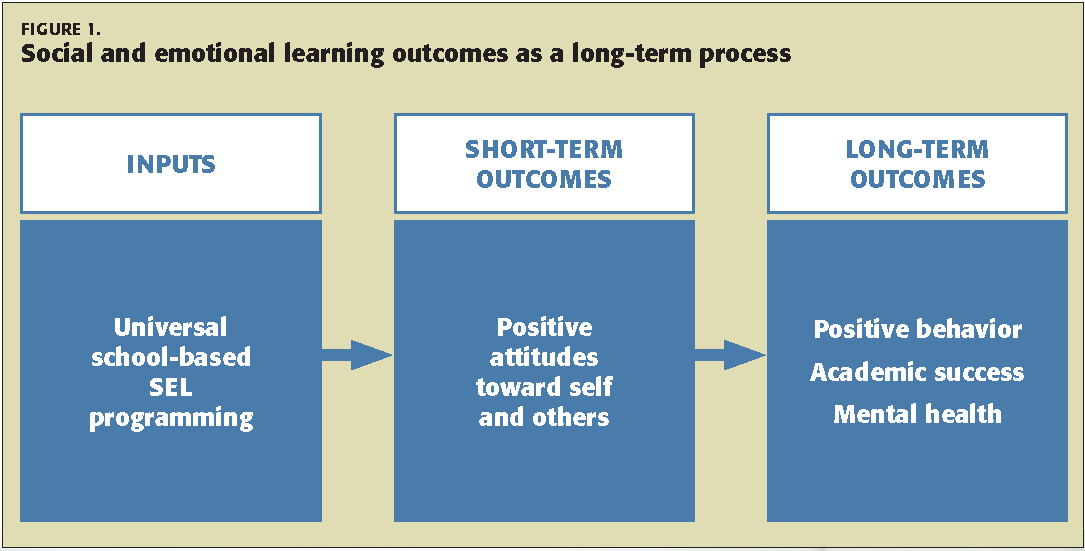Throughout this blog, I have emphasized the importance of the adoption and integration of the socio-emotional learning ("SEL") curriculum in schools and have shared how only 29 of our 50 states have determined SEL standards and shared those guidelines with their schools (Positive Action, 2020). With 31 states not adopting guidelines and standards on how to implement SEL in schools, we must take it upon ourselves to ensure our student bodies receive this key area of knowledge integral to their growth as humans, their interactions and communication skills, and their own intrinsic emotional needs. Unfortunately, the states that do choose to adopt SEL programs into the school curriculum often fall short of being able to implement it wholly and instead integrate a small amount of the core teachings and broad goals for development thus doing their student bodies a disservice as they're not receiving the full benefit of the curriculum. So what should we do to ensure students receive the full benefit of SEL?
SEL is divided into five areas in most programs: the development of self-awareness, self-management, social awareness, relationship skills, and responsible decision making (Greenberg et al., 2017). Each of these areas serves a unique purpose of being able to transform the way an individual interacts with others, the world and the environment around them, as well as with themself. Schools that have integrated SEL fully into their infrastructure and empower their educators and staff with the knowledge necessary to be able to effectively teach SEL see the benefits in the form of a 62% reduction in violence, 51% fewer bullying incidents, a 73% reduction in suspension, and 85% fewer disciplinary referrals (Positive Action, n.d.) SEL is truly invaluable to the short-term and long-term goals of my project of ending bullying as well as to our students growing into well-rounded humans.

Without the integration of SEL into the infrastructure of every school, the policies of every state, and the minds of every parent, educator, and student we run the risk of keeping the landscape the way that it currently stands - full of students being bullied and continuing to vilify students craving someone to help them. It is imperative that we push for our school boards and education officials to not only recognize the value and importance of SEL but for them to integrate it into our classroom environments and schools for the betterment of our student bodies. Through doing so we will continue to see the positive effects on students' behaviors and attitudes toward one another as well as toward themselves.

You've done an awful lot of reaching out to state legislators, so I won't make you do that again. Instead, I have a two-part call to action for you this week. I first challenge you to use this website to look up your zoning for the district and members of your local school board as well as their contact information and to send them a link to this blog requesting they evaluate the amalgamation of SEL and their current curriculum. Second, I challenge you individually to do these three things in your interactions this week:
1. Be cognizant of not just your emotions, but others by asking empathetic questions, displaying active listening, and seeking first to understand then to be understood in all interactions.
2. Remember that your perspective isn't the only perspective, look at every situation from the other side's point of view as a means of appreciating and respecting the perspective of another.
3. Don't come to the conflict to fight, come to the conflict to find a solution. By employing strategies of responding to conflict in a proactive and positive manner rather than a reactive manner while also reflecting on the resolution that is achieved by doing so you're not just creating a positive habit for yourself in the way you respond to situations, but you're setting a positive example for those around you.
I would love to hear how your interactions this week progress and if you see the benefit of these key SEL ideologies in your adult life. If you'd like to take this one step further, and I would love it if you did, you can encourage your children to take the same three actions in their day-to-day lives as well. Let me know if they have any insights as to if their interactions seemed more positive and if they felt better internally about the way they interacted with their peers!
References
Greenberg, M. T., Domitrovich, C. E., Weissberg, R. P., & Durlak, J. A. (2017). Social and Emotional Learning as a Public Health Approach to Education. The Future of Children, 27(1), 13–32. https://doi.org/10.1353/foc.2017.0001
Positive Action. (n.d.). What is SEL? Social-Emotional Learning Explained | Positive Action. https://www.positiveaction.net/what-is-sel
Positive Action. (2020, August 7). Social-Emotional Learning (SEL) Standards in All 50 States. https://www.positiveaction.net/blog/sel-standards
Media References
Lancaster, I. (2018, September 20). Celebrating Habit #5: Understanding. iLEAD Lancaster. https://ileadlancaster.org/leader-in-me/celebrating-habit-5-understanding/
Mahoney, J. L. (2019, August 22). An update on social and emotional learning outcome research. Kappanonline.Org. https://kappanonline.org/social-emotional-learning-outcome-research-mahoney-durlak-weissberg/
Social-Emotional Learning: What Is SEL and Why SEL Matters. (2016, August 1). YouTube. https://www.youtube.com/watch?v=ikehX9o1JbI
Comments
Post a Comment